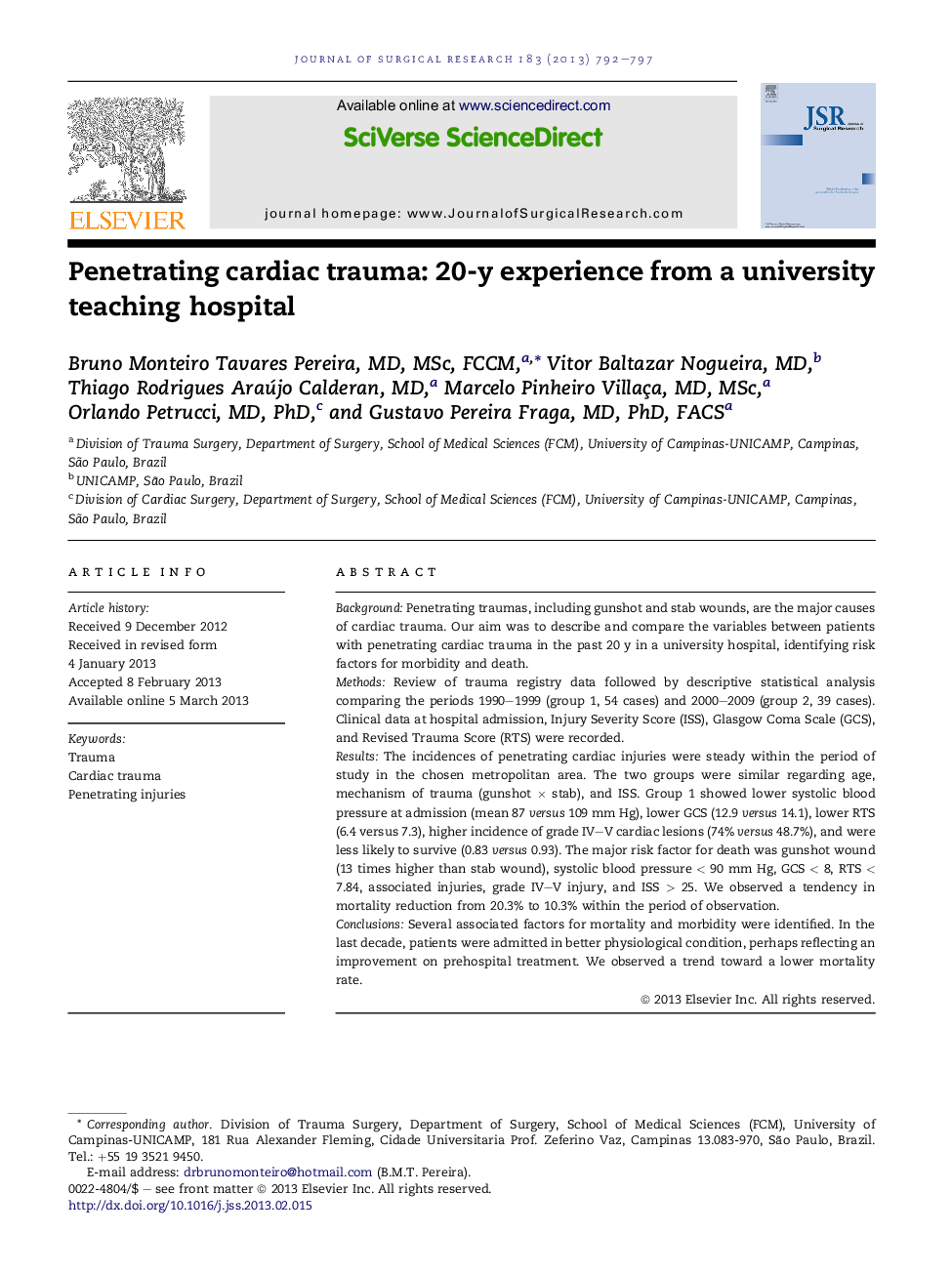| Article ID | Journal | Published Year | Pages | File Type |
|---|---|---|---|---|
| 4300893 | Journal of Surgical Research | 2013 | 6 Pages |
BackgroundPenetrating traumas, including gunshot and stab wounds, are the major causes of cardiac trauma. Our aim was to describe and compare the variables between patients with penetrating cardiac trauma in the past 20 y in a university hospital, identifying risk factors for morbidity and death.MethodsReview of trauma registry data followed by descriptive statistical analysis comparing the periods 1990–1999 (group 1, 54 cases) and 2000–2009 (group 2, 39 cases). Clinical data at hospital admission, Injury Severity Score (ISS), Glasgow Coma Scale (GCS), and Revised Trauma Score (RTS) were recorded.ResultsThe incidences of penetrating cardiac injuries were steady within the period of study in the chosen metropolitan area. The two groups were similar regarding age, mechanism of trauma (gunshot × stab), and ISS. Group 1 showed lower systolic blood pressure at admission (mean 87 versus 109 mm Hg), lower GCS (12.9 versus 14.1), lower RTS (6.4 versus 7.3), higher incidence of grade IV–V cardiac lesions (74% versus 48.7%), and were less likely to survive (0.83 versus 0.93). The major risk factor for death was gunshot wound (13 times higher than stab wound), systolic blood pressure < 90 mm Hg, GCS < 8, RTS < 7.84, associated injuries, grade IV–V injury, and ISS > 25. We observed a tendency in mortality reduction from 20.3% to 10.3% within the period of observation.ConclusionsSeveral associated factors for mortality and morbidity were identified. In the last decade, patients were admitted in better physiological condition, perhaps reflecting an improvement on prehospital treatment. We observed a trend toward a lower mortality rate.
